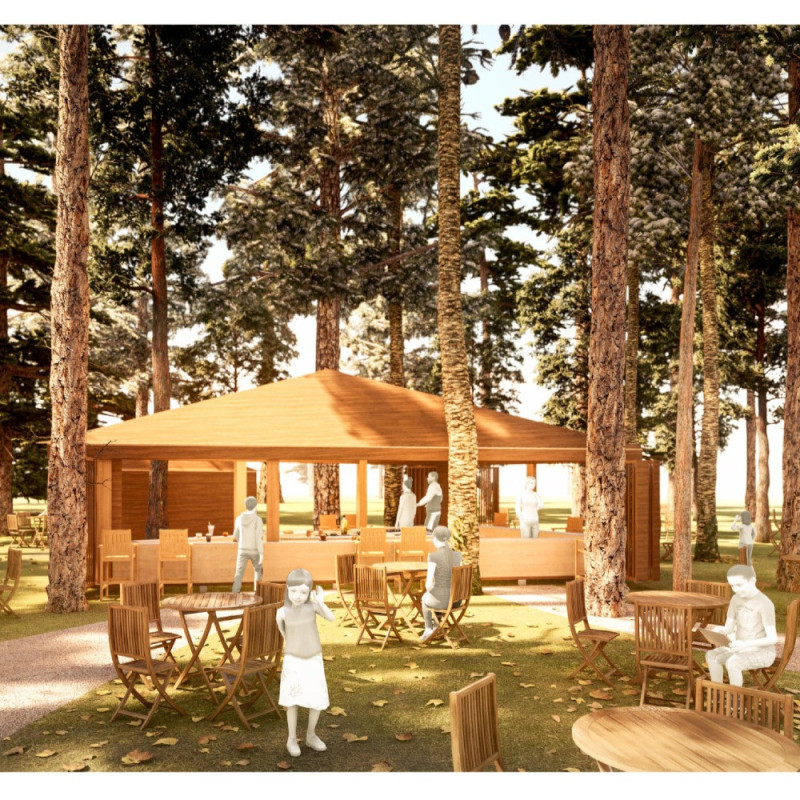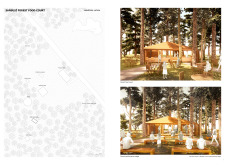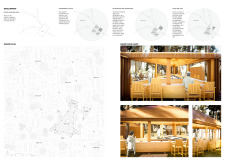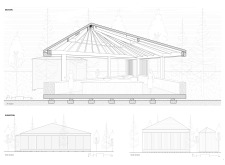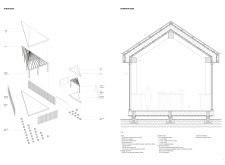5 key facts about this project
The Sansusi Forest Food Court in Aknīstes, Latvia, presents a solution that blends community needs with the surrounding forest environment. It serves as both a dining area and a venue for performances, providing a space for social gatherings and activities. The design emphasizes flexibility, allowing various uses while honoring the natural landscape.
Design Concept
The layout divides the space into specific areas for eating, workshops, and performances. Clear pathways enhance movement throughout the site and promote interaction among visitors. This organization aims to create an inviting atmosphere where people can engage with both the structure and the natural environment.
Materials and Construction
The choice of materials reflects a commitment to sustainability and simplicity. The roof is made from carbonized pine, which adds durability while keeping a natural look. A timber structure underpins the design, reinforcing its ecological goals. The use of plywood for flooring brings warmth to the interior. Large folding doors create an easy flow between indoor and outdoor spaces, inviting fresh air and natural light into the food court.
Program Layout
The program prioritizes the eating area, which takes up about 60% of the total space. This allocation highlights the primary function as a place for community meals and gatherings. Three separate workshop areas are included in the design, allowing for diverse activities and events. Storage is strategically placed away from primary areas, keeping the main spaces open and accommodating.
Natural Integration
The design values the existing trees on the site, incorporating them into the overall layout. This respect for local ecology enhances the visual appeal of the space. The triangle-plan scheme reinforces the connection between the structure and its surroundings, ensuring that natural elements enrich the overall experience.
Folding doors also play a significant role, facilitating a smooth transition between indoor and outdoor areas while allowing visitors to enjoy the forest ambiance.


